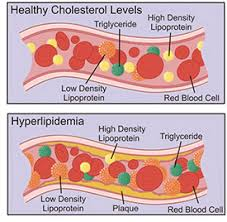The nurse identifies that the goal of decreasing the cardiac workload for a client receiving atenolol 25 mg PO BID for unstable angina is met when the client has:
An increase in urine output.
Less dyspnea with activity.
A blood pressure of 120/80 mmHg.
A heart rate of 65 per minute.
The Correct Answer is D
Choice a reason:
An increase in urine output can be a sign of improved kidney function or the effect of medications, but it is not a direct indicator of reduced cardiac workload. Atenolol, a beta-blocker, primarily reduces the heart rate and myocardial oxygen demand, not urine output.
Choice b reason:
Less dyspnea with activity suggests improved cardiovascular efficiency, but it is not a specific measure of cardiac workload. Dyspnea can be influenced by respiratory conditions and is not solely determined by cardiac function.
Choice c reason:
A blood pressure of 120/80 mmHg is considered optimal for most adults and indicates good control of hypertension. However, it does not specifically reflect the cardiac workload, which is more directly affected by heart rate and myocardial oxygen demand.
Choice d reason:
A heart rate of 65 per minute is a clear indicator that atenolol is effective in reducing cardiac workload. Atenolol decreases the heart rate, which in turn reduces myocardial oxygen demand and the overall workload on the heart. This is particularly important for patients with unstable angina, where reducing the heart's workload can prevent angina attacks and potential myocardial infarction.
Nursing Test Bank
Naxlex Comprehensive Predictor Exams
Related Questions
Correct Answer is D
Explanation
Choice A Reason:
Gas pains, while uncomfortable, are not typically a serious adverse effect of simvastatin and do not usually require immediate medical attention unless they are severe or persistent.
Choice B Reason:
Headaches are a common side effect of many medications, including simvastatin, and are not generally considered an emergency. However, if the headache is severe, persistent, or accompanied by other symptoms, it should be reported to a healthcare provider.
Choice C Reason:
Occasional constipation is another common side effect and is not usually a cause for immediate concern unless it becomes severe or chronic.
Choice D Reason:
Muscle weakness and pain, especially in the calves, can be a sign of a serious condition called rhabdomyolysis, which is a rare but serious adverse effect of statins like simvastatin. This condition involves the breakdown of muscle tissue and can lead to kidney damage. It should be reported to a healthcare provider immediately.

Correct Answer is B
Explanation
Choice A Reason
Bradycardia, which is a slower than normal heart rate, is not typically a sign of hypoglycemia. Hypoglycemia can actually cause an increase in heart rate due to the release of adrenaline in response to low blood sugar levels.
Choice B Reason
Tremors are a common sign of hypoglycemia and are caused by the release of adrenaline. When blood sugar levels fall too low, the body releases adrenaline as a part of the "fight or flight" response, which can lead to shaking or trembling.
Choice C Reason
Kussmaul's respirations, which are deep and labored breathing patterns, are more commonly associated with diabetic ketoacidosis, not hypoglycemia. This type of breathing is the body's response to acidosis and is not indicative of low blood sugar levels.
Choice D Reason
Polyuria, or excessive urination, is not a sign of hypoglycemia. It is more commonly associated with hyperglycemia, as the body attempts to eliminate excess glucose through urine.
Whether you are a student looking to ace your exams or a practicing nurse seeking to enhance your expertise , our nursing education contents will empower you with the confidence and competence to make a difference in the lives of patients and become a respected leader in the healthcare field.
Visit Naxlex, invest in your future and unlock endless possibilities with our unparalleled nursing education contents today
Report Wrong Answer on the Current Question
Do you disagree with the answer? If yes, what is your expected answer? Explain.
Kindly be descriptive with the issue you are facing.
